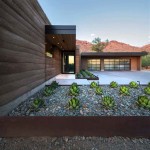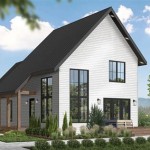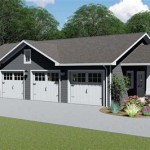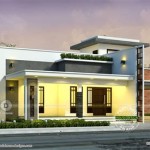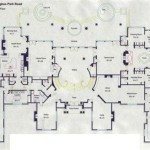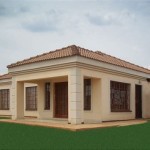Cape Cod Beach House Plans: Design Considerations for Coastal Living
Cape Cod beach house plans represent a unique architectural style adapted to the specific demands and aesthetic preferences of coastal living. These designs often incorporate elements that maximize views, withstand harsh weather conditions, and promote a comfortable, relaxed atmosphere for both residents and guests. Understanding the key considerations involved in these plans is crucial for achieving a successful and enduring beachfront property.
The architectural style of Cape Cod homes originated in the 17th century, influenced by English settlers adapting to the New England climate. While the original designs were simple and pragmatic, modern Cape Cod beach house plans have evolved to incorporate contemporary amenities and preferences, all while retaining the characteristic features that define the style. These features include steep roofs, dormer windows, and a central chimney, which are all functional elements designed to withstand the elements.
Planning a Cape Cod beach house involves more than just aesthetics; it requires a thorough understanding of local building codes, environmental regulations, and the specific challenges posed by the coastal environment. These factors significantly influence design choices and construction methods, demanding careful consideration throughout the planning process.
Key Point 1: Site Considerations and Environmental Factors
The location of a Cape Cod beach house is a primary determinant of its design. Proximity to the ocean exposes the structure to various environmental stressors, including strong winds, salt spray, and potentially flooding. Therefore, site selection must be preceded by a thorough assessment of these factors.
Soil stability is a critical consideration. Sandy soil, common in coastal areas, can be unstable and require specialized foundation techniques to ensure the structure's integrity. Pile foundations, which involve driving long posts deep into the ground to reach stable soil layers, are often employed to provide a secure base. Alternatively, reinforced concrete slabs can be used, but these require careful engineering to prevent erosion and shifting.
Wind loads are another significant factor. Cape Cod beach houses must be designed to withstand high winds associated with coastal storms. This necessitates the use of strong structural materials, such as pressure-treated lumber and reinforced connections. Roof designs should also be streamlined to minimize wind resistance, and windows and doors must be impact-resistant to prevent breaches during severe weather.
Salt spray is a corrosive agent that can damage building materials over time. Choosing materials that are resistant to salt corrosion is essential. This includes using stainless steel fasteners, vinyl or fiberglass siding, and marine-grade paints and coatings. Regular maintenance, such as washing down exterior surfaces, can also help to prolong the lifespan of these materials.
Flood zones present another crucial consideration. Building regulations often dictate specific elevation requirements for structures located in flood-prone areas. Elevating the house on pilings or stilts can protect it from floodwaters and reduce the risk of damage. Flood insurance is also typically required for properties in these zones.
Environmental regulations play a significant role in the design and construction of coastal properties. Building permits often require environmental impact assessments to ensure that the project does not negatively affect the surrounding ecosystem. Regulations may restrict construction activities near dunes, wetlands, or other sensitive areas. Compliance with these regulations is essential to avoid penalties and ensure the long-term sustainability of the coastal environment.
Key Point 2: Architectural Style and Design Features
Cape Cod beach house plans typically incorporate design features that complement the coastal environment and enhance the living experience. These features often blend traditional elements with modern amenities to create a comfortable and aesthetically pleasing space.
Open floor plans are a common characteristic of modern Cape Cod beach houses. These designs promote a sense of spaciousness and allow for unobstructed views of the ocean. Large windows and sliding glass doors are often incorporated to maximize natural light and provide easy access to outdoor living spaces.
Dormer windows are a traditional feature of Cape Cod architecture that serves both aesthetic and functional purposes. They provide additional light and ventilation to the upper floors and can also increase headroom in attic spaces. Dormers can be designed in various styles to complement the overall architectural design of the house.
Porches and decks are integral components of Cape Cod beach house plans. They provide outdoor living spaces where residents can relax, entertain guests, and enjoy the coastal views. Decks are often elevated to provide better views and protection from flooding, while porches offer a sheltered space for enjoying the outdoors in all weather conditions.
Natural materials are frequently used in the construction and finishing of Cape Cod beach houses. Wood siding, cedar shingles, and stone accents are common choices that blend seamlessly with the coastal landscape. Interior finishes often incorporate natural wood flooring, exposed beams, and nautical-inspired décor to create a cohesive and inviting aesthetic.
The roof design is a crucial element of Cape Cod architecture. Steeply pitched roofs are characteristic of the style, providing effective drainage and preventing snow accumulation. The roof is typically covered with asphalt shingles, cedar shingles, or metal roofing, depending on the aesthetic preferences and budget of the homeowner.
Interior layouts often prioritize functionality and comfort. Kitchens are typically designed with ample counter space and storage, making them ideal for preparing meals and entertaining. Bathrooms often feature spa-like amenities, such as soaking tubs and walk-in showers, to create a relaxing retreat. Bedrooms are typically located on the upper floors to maximize privacy and provide better views.
Key Point 3: Material Selection and Construction Techniques
The selection of appropriate materials and construction techniques is crucial for ensuring the durability and longevity of a Cape Cod beach house. The harsh coastal environment demands materials that can withstand exposure to salt spray, wind, and moisture.
Pressure-treated lumber is essential for structural framing, particularly for components that are in direct contact with the ground or exposed to moisture. This type of lumber is treated with chemicals that prevent decay and insect infestation, extending its lifespan and ensuring the structural integrity of the house.
Stainless steel fasteners should be used throughout the construction process to prevent corrosion. These fasteners are more expensive than standard steel fasteners, but they offer superior resistance to salt spray and moisture, making them a worthwhile investment in the long run.
Vinyl or fiberglass siding is a popular choice for Cape Cod beach houses due to its durability and low maintenance requirements. These materials are resistant to rot, insects, and moisture, and they do not require painting or staining. They are also available in a variety of colors and styles to complement the architectural design of the house.
Impact-resistant windows and doors are essential for protecting the house from damage during coastal storms. These windows and doors are designed to withstand high winds and flying debris, preventing breaches and minimizing the risk of injury and property damage. They also provide added security and insulation.
Proper insulation is crucial for maintaining a comfortable indoor environment and reducing energy consumption. Spray foam insulation is a popular choice for Cape Cod beach houses due to its ability to fill gaps and cracks, creating an airtight seal. This type of insulation also provides excellent thermal performance, helping to keep the house warm in the winter and cool in the summer.
Elevated construction techniques, such as building on pilings or stilts, are often required in flood-prone areas. These techniques raise the house above the base flood elevation, protecting it from floodwaters and reducing the risk of damage. They also allow for better ventilation underneath the house, preventing moisture buildup and potential mold growth.
Regular maintenance is essential for preserving the integrity of a Cape Cod beach house. This includes washing down exterior surfaces to remove salt spray, inspecting and repairing any damage to the roof or siding, and ensuring that drainage systems are functioning properly. By performing regular maintenance, homeowners can extend the lifespan of their house and prevent costly repairs.
In addition to these considerations, adhering to local building codes and regulations is paramount. These codes are designed to ensure the safety and structural integrity of buildings, particularly in areas prone to natural disasters. Consulting with a qualified architect or engineer is essential to ensure that the design and construction of a Cape Cod beach house meet all applicable standards.
Ultimately, successful Cape Cod beach house plans require a thoughtful and comprehensive approach, considering not only the aesthetic preferences of the homeowner but also the unique environmental challenges of the coastal environment. Careful attention to site selection, material selection, and construction techniques will result in a durable, comfortable, and aesthetically pleasing home that can withstand the test of time.

10 Classic Cape Cod Homes That Do Beach Decor Right Architectural Digest

Cape Cod Beach Cottage Design Home Bunch Interior Ideas

Cape Cod House Plans With Gabled Dormers

Cape Cod Shingle Beach House With Coastal Interiors Home Bunch Interior Design Ideas

Cape Cod House Plans The Plan

Cape Cod House Plans With Gabled Dormers

Classic And Cool Cape Cod House Plans We Love Houseplans Blog Com

Contemporary Beach House Plan Lake Cape Cod The Floor Plans

15 Cape Cod House Style Ideas And Floor Plans Interior Exterior

Cape Cod Style House Plans Floor Designs

